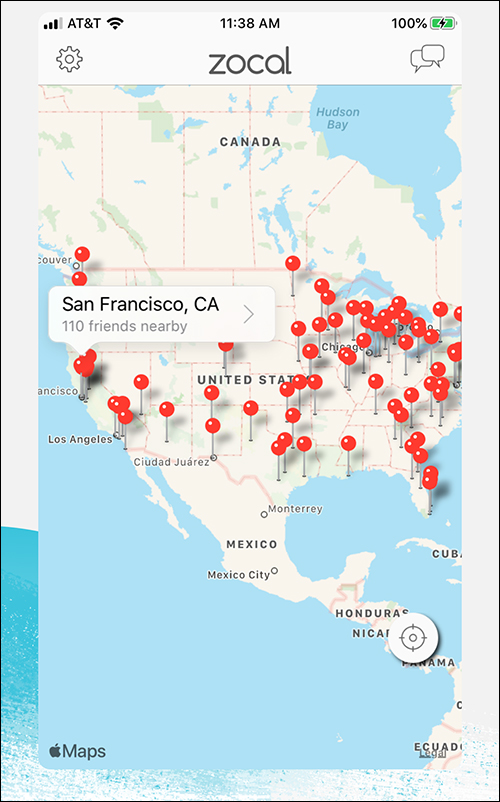Mar 20, 2020Five months after Zocal Messenger released its location messaging app for Android- and iOS-based devices, the company has launched a new Live Location Sharing feature. Zocal Messenger reports that it has experienced a sales lift of 600 percent within the past two weeks.
That, says company founder Anish Godha, may be because Live Location Sharing offers a level of security in uncertain times by helping family members and friends to track each other's whereabouts. The app makes it possible to uniquely locate any participating individual on your friends list, Godha says, by leveraging the phone's GPS data, and users can set up temporary circles of friends who can view their locations in real time.

Smartphones already come with location services. The Apple iPhone, for instance, has a Find My Friends system by which users can share data with family members or others in order to view their locations. Zocal is designed, however, to use the phone's GPS functionality but enable tracking on either Android or iOS systems, and to make the process more user-customizable. For instance, the Zocal app enables individuals to share their whereabouts to specific parties, depending on their location or travels.
Not only have sales been heavy during the past two weeks, Godha says, but the feedback he has received from users is that the app can provide some security during the COVID-19 pandemic. In fact, he adds, Godha and his wife use the app to share where they are located and when they are there, in case they fail to return when expected or end up in an area that is a hotspot for the virus. Users can download the app, after which the system will display a map of the world with dots indicating in which cities their friends also using the system can be found.
Users can link the app to their contacts, and it will display any friends in the area who also use the system. In addition, it will allow people to send a link to friends who are not using the system. Those friends can then opt in to view the user's location and share their own. Individuals can set up specific groups consisting of those with whom they wish to share information. The Live Location Sharing feature offers a layer of security and peace of mind, Godha says. "People are in a mode of uncertainty," he states, "so that extra security of being able to say 'Hey, Mom and Dad, I'm going out' and sharing that location is really attractive."
The system includes a city-level service by which users can indicate only to friends and contacts in the same area that they are in a particular city. That can be customized and changed at any time. The second level allows users to share their live location specific to a much more granular area within a neighborhood.
The solution can provide both long- or short-term group sharing. For instance, if an individual travels to another city, he or she can set up a 12-hour feature for those in that city with them. "These are very situational or circumstantial location shares," Godha says, such as when a person is traveling. If someone is in town on business, for example, or is vacationing with friends, that person can share his or her location with fellow travelers so they can easily meet up when they need to.
The system automatically stops tracking a person's location after a specified amount of time, after which a user would then set up another temporary session. The app does not include a permanent network of friends at home, with whom they could share their location. "This is primarily because location data is sensitive," Godha says, "and we want to make sure users share their exact location mindfully, specific to an activity or circumstance."
This means that if a family shares their location settings, a member could view where his or her spouse, parent or child was located. If that person did not return when expected, the system would enable the user to view a blue dot on the map indicating the individual's whereabouts. The user could then utilize the app to send a message—to ask, for instance, if there is a problem.
Knowing others' location, Godha reports, seems to be of concern to those experiencing some level of quarantine during the COVID-19 epidemic. "Since we rolled out the Live Location Sharing feature," he states, "we've seen a spike in our user base," which points to the need for a better connection between loved ones and friends during the pandemic.
For instance, Godha says, many users are in California's San Mateo County, where the population is being instructed to shelter in place. If they do leave their homes, they must be traveling for essential purposes only, in order to prevent the virus's transmission. Users can view when a loved one reaches a store, health-care facility or other location, as well as when he or she leaves that site. Some users are comparing that information against maps provided by local law-enforcement and health offices showing the locations of current COVID-19 hotspots.
If someone on a person's contact list ends up in a location known to be a virus hotspot, he or she can send a message to offer a warning. "These are not regular times," Godha says, adding that he and his wife share their locations with each other to provide security that they are not at a location that could be hazardous. Although the timing of the new feature's release was inadvertent, he notes, "We can see why they are so interested in this feature."


